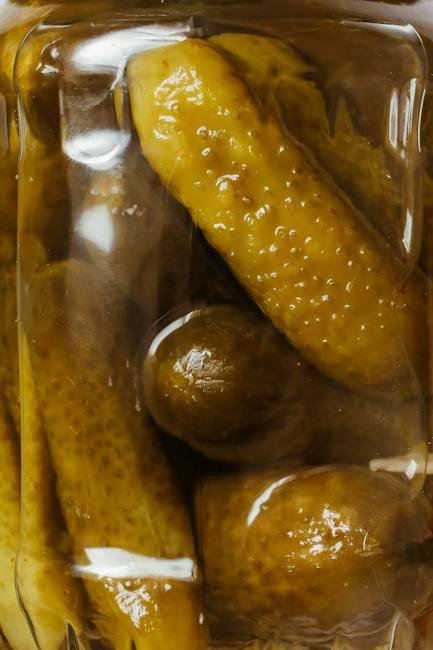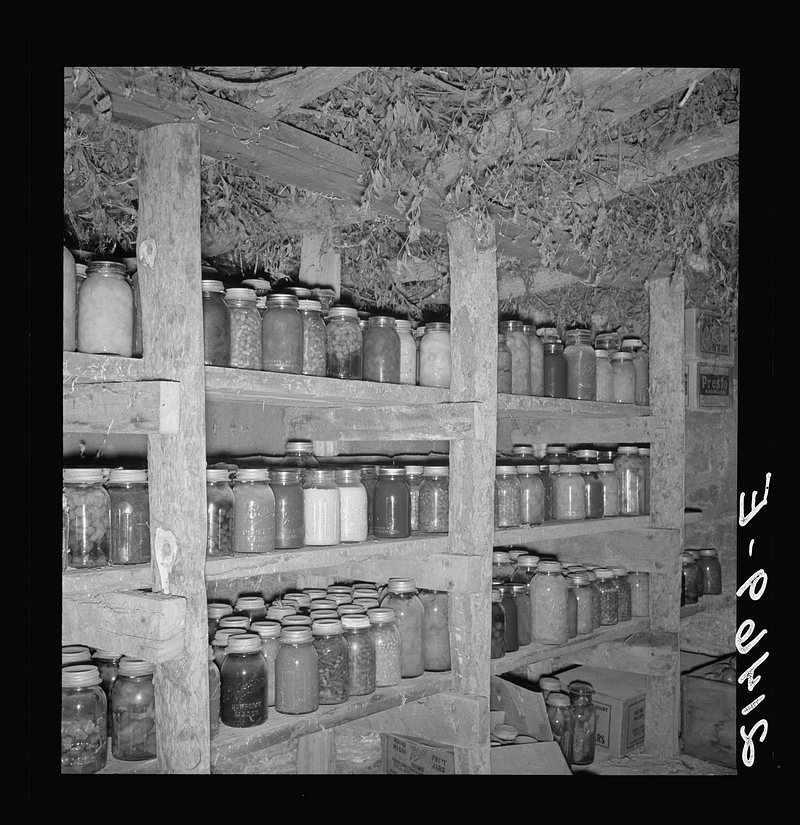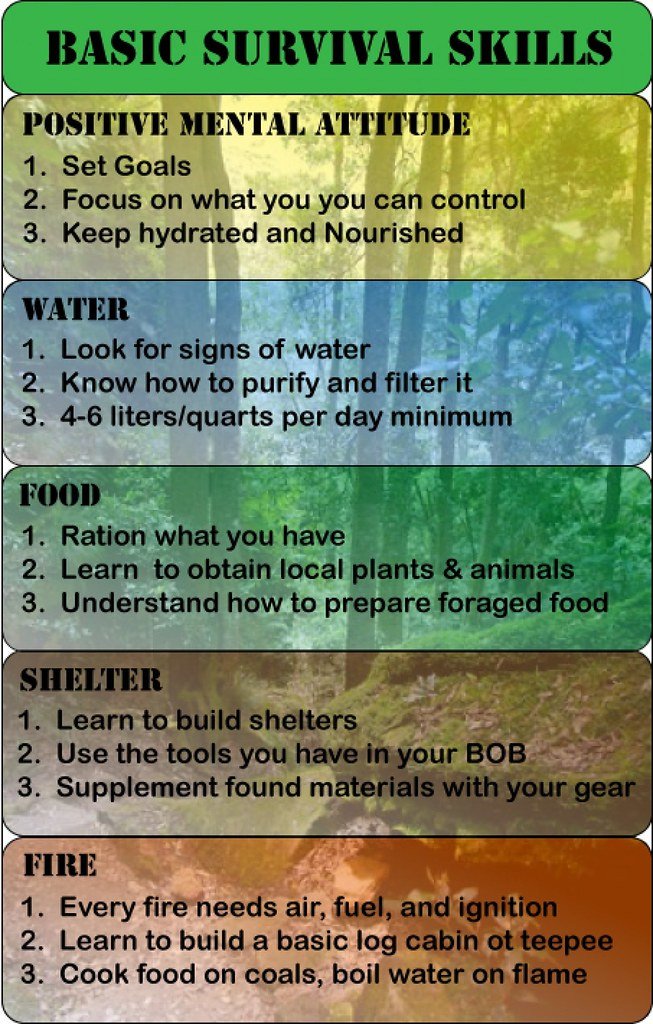Now Reading: How to Make Your Own Pickled Foods
-
01
How to Make Your Own Pickled Foods

How to Make Your Own Pickled Foods
Have you ever found yourself savoring the tangy crunch of a perfectly pickled cucumber and wondered, “Could I make this magical concoction in my own kitchen?” Well, dear reader, wonder no more! The art of pickling is not just reserved for grandmothers with secret family recipes. It is a delightful craft that anyone can embark upon and master. So, roll up your sleeves, put on your apron, and prepare yourself for a flavorful adventure as we unlock the secrets of making your very own pickled foods.
Table of Contents
- Getting Started: Essential Tools and Ingredients for Pickling
- The Art of Brining: Understanding the Science behind Pickled Foods
- Flavorful Variations: Exploring Different Pickling Techniques and Ingredients
- Perfecting the Pickling Process: Tips and Tricks for Achieving Optimal Results
- Preservation and Enjoyment: Storing and Using Homemade Pickled Foods
- Q&A
- Closing Remarks

Getting Started: Essential Tools and Ingredients for Pickling
Ready to dive into the world of pickling? Here are the essential tools and ingredients you need to get started on your pickling journey:
Tools:
- Glass Jars with Lids: Opt for glass jars as they do not react with the acidic nature of pickling ingredients. Make sure the jars have tight-fitting lids to create a proper seal.
- Canning Funnel: A canning funnel makes it easier to transfer your pickling brine and ingredients into the jars without creating a mess.
- Large Pot: You’ll need a pot for boiling water to sterilize your jars before filling them with delicious pickles.
- Jar Lifter: This handy tool helps you safely remove hot jars from boiling water baths or canners.
Ingredients:
- Vinegar: Choose vinegar with a high acidity level, like white distilled vinegar, apple cider vinegar, or white wine vinegar, to ensure proper preservation of your pickles.
- Pickling Salt: This type of salt is free from additives like iodine or anti-caking agents, which can interfere with the pickling process. It helps maintain the crispiness and flavor of your pickles.
- Spices: Get creative with spices! Mustard seeds, dill, black peppercorns, and cloves are just a few options that add depth to your pickling recipe. Personalize your pickles by experimenting with different spice combinations.
- Fresh Produce: Choose high-quality vegetables like cucumbers, carrots, beets, or cauliflower for pickling. Use organic if possible, as they tend to have a better texture and flavor.
With these essential tools and ingredients, you’re well-equipped to embark on your pickling adventure. Remember to follow your chosen recipe’s instructions for best results and enjoy the taste of homemade pickles!

The Art of Brining: Understanding the Science behind Pickled Foods
The Science behind Pickled Foods
When it comes to pickled foods, there is a beautiful artistry behind the process – the art of brining. But what lies beneath this art is a fascinating science that shouldn’t be overlooked. By understanding the scientific principles at play, we can truly appreciate the magic that happens when raw ingredients are transformed into delectable pickles.
At its core, brining involves soaking food in a solution of salt and water, sometimes accompanied by vinegar and other flavorful ingredients. This process serves multiple purposes, but it primarily works to preserve the food and enhance its taste. The science behind brining lies in the chemistry of osmosis and fermentation.
- Osmosis: The salt in the brine draws out the moisture from the food through osmosis. As a result, bacteria and other spoilage agents cannot survive, thus preserving the ingredients.
- Fermentation: During the brining process, beneficial bacteria present in the food, or introduced through a starter culture, convert the food’s sugars into lactic acid. This acidifies the environment, creating a tart and tangy flavor while further inhibiting harmful bacteria.
Ultimately, pickled foods are a remarkable blend of artistry and science. It takes a skilled hand and a knowledgeable mind to strike the perfect balance between flavor, preservation, and texture. So, the next time you savor a crisp dill pickle or relish the tang of pickled onions, take a moment to ponder the incredible art of brining and the scientific mysteries it holds.
Flavorful Variations: Exploring Different Pickling Techniques and Ingredients
Step into the fascinating world of pickling as we dive into a plethora of flavorful variations. Whether you’re a culinary enthusiast or simply looking to add a tangy twist to your dishes, exploring different pickling techniques and ingredients is bound to elevate your taste buds.
Traditional Techniques:
Embrace the age-old art of pickling with these classic techniques:
- Brine pickling: Soak your chosen vegetables or fruits in a saltwater solution to create a crave-worthy crunch.
- Vinegar pickling: Infuse your produce with tangy flavors by preserving them in a vinegar-based liquid, often enhanced with spices and herbs.
- Fermentation: Unlock a whole new depth of flavors by allowing natural bacteria to perform their magic, resulting in delightfully tangy and probiotic-rich pickles.
Exploring Ingredients:
Unleash your creativity in the world of pickling by experimenting with these unique ingredients:
- Exotic spices: From star anise to cardamom, incorporating aromatic spices into your pickling recipes can yield intriguing and unexpected flavor profiles.
- Farm-fresh produce: Venture beyond the usual suspects and explore a wide array of veggies and fruits, both homegrown and sourced locally, for an explosion of flavors.
- Unconventional pickling bases: Think beyond cucumbers! Pickle mushrooms, jalapeños, beets, or even watermelon rinds for a delightful medley of tastes and textures.
So, gather your mason jars, stock up on pickling spices, and embark on a delicious exploration of flavors that will leave you with jars of delightful tanginess ready to brighten any culinary creation. Let your imagination run wild and savor the endless possibilities hidden within the world of pickling!
Perfecting the Pickling Process: Tips and Tricks for Achieving Optimal Results
Embarking on the art of pickling can be both exciting and rewarding. To ensure that your pickles turn out crisp, flavorful, and absolutely delicious, we’ve compiled some insider tips and tricks to help you achieve optimal results.
Pick the Perfect Produce:
- Choose firm, fresh vegetables from a local farmer’s market or your own garden for the best flavor.
- Consider the size and shape of the vegetables, as different varieties can affect the texture and appearance of your pickles.
- Wash and scrub the produce properly to remove any dirt or impurities.
Master the Brine:
- Experiment with different vinegar types such as apple cider, white, or rice vinegar to add unique notes to your pickles.
- Add spices and herbs like dill, garlic, or mustard seeds to infuse a burst of flavor into your brine.
- Balance the salt-to-water ratio for the perfect level of tanginess. Too much salt can overpower the taste, while too little can result in a bland pickle.
Get Creative with Flavor Enhancements:
- Try incorporating additional ingredients like onions, peppers, or even fruit slices to add depth and complexity to your pickles.
- Consider experimenting with different brines or adding a touch of sweetness using honey or sugar.
- Allow your pickles to marinate for varying lengths of time to achieve your desired level of sourness.
By following these insights and persevering through some trial and error, you’ll become a pickling maestro in no time. So gather your ingredients, roll up your sleeves, and unleash your creativity in perfecting the pickling process!
Preservation and Enjoyment: Storing and Using Homemade Pickled Foods
Proper storage: Once you’ve mastered the art of pickling, it’s essential to store your homemade creations correctly to ensure their deliciousness lasts. Here are a few tips:
- Jar selection: Opt for glass jars with airtight lids. Mason jars are a popular choice as they help maintain the freshness of pickled foods, keeping them crisp and flavorful.
- Cool and dark: Find a cool, dark spot in your pantry or cellar to store your jars. Exposure to heat and sunlight can cause the flavors to degrade.
- Labeling: Remember to label your jars with the date of pickling. This helps you keep track of the aging process, allowing you to enjoy your pickled goodies at just the right time.
Delightful uses: Now that you have your pickles lovingly preserved, let’s explore some mouthwatering ways to indulge in their tanginess and crunch!
- Savor them solo: Pickles are the quintessential snack. Enjoy them straight from the jar, on their own, for an instant burst of tart flavor and satisfying crunch.
- Charcuterie magic: Elevate your charcuterie board by adding a variety of pickled treats. Pickled vegetables, such as carrots, cauliflower, or radishes, provide a refreshing and vibrant contrast to cured meats and cheeses.
- Sandwich superstar: Take your sandwiches to new heights with pickles! From classic deli sandwiches to gourmet creations, pickles bring a tangy punch that balances other flavors.
Remember, with proper storage and creative usage, your homemade pickled foods will continue to accentuate your culinary adventures, adding that extra zing to your plate!
Q&A
How to Make Your Own Pickled Foods
What is pickling?
Pickling is a preserving technique that involves submerging food in a vinegar or brine solution. This process helps enhance flavors and extends the shelf life of various fruits and vegetables.
Why should I make my own pickled foods?
Making your own pickled foods allows you to tailor the flavors and experiment with different ingredients. It’s also a cost-effective way to enjoy the satisfaction of homemade snacks and condiments.
What foods can be pickled?
Almost any fruit or vegetable can be pickled! Popular choices include cucumbers, carrots, onions, peppers, and even watermelon rinds. Feel free to get creative and try pickling your favorite foods.
What equipment do I need to make pickled foods?
You don’t need any fancy equipment to make pickled foods. Some basic essentials include glass jars, a saucepan, a cutting board, a knife, and a stirring spoon. Make sure to sterilize the jars before using them.
Are there different pickling methods?
Yes, there are two main pickling methods. The first is the traditional method that involves fermenting foods using natural bacteria. The second is the quick pickling method, which uses vinegar or a brine solution to pickle foods more rapidly.
How long does it take to pickle foods?
The pickling time varies depending on the recipe and the type of food being pickled. Quick pickles can be ready in as little as a day or two, while fermented pickles require several weeks. Follow the recipe instructions for best results.
Are pickled foods healthy?
Pickled foods can be a healthy addition to your diet as they retain many of the original nutrients from the fruits or vegetables being pickled. However, pickled foods also tend to be high in sodium, so it’s important to consume them in moderation as part of a balanced diet.
How long can I store pickled foods?
If properly sealed and stored in a cool, dark place, pickled foods can generally last for several months to a year. However, it’s always a good idea to check for any signs of spoilage, such as unusual odors or changes in texture, before consuming them.
Closing Remarks
As we take our final crunchy bite from this jar of knowledge, we hope we’ve inspired you to embark on your own pickling adventure. The art of preserving vegetables with brine is an ancient one, passed down through generations, and yet it continues to captivate our taste buds and ignite our culinary curiosity.
In this pickle-filled journey, we’ve uncovered the secrets of pickling, from selecting the freshest produce to crafting the perfect blend of aromatic spices. We’ve delved into the science behind the magic, unraveling the mysteries of the brine’s transformative powers.
As we bid farewell to this article, let us not forget the countless possibilities that lay ahead. In your kitchen, an abundance of flavors and textures await, mere ingredients craving transformation. The tangy snap of pickled cucumbers, the fiery burst of pickled peppers, or even the sweet complexity of pickled beets, all within your grasp.
So venture forth, kitchen explorers, with jars in hand and ambition in your hearts. Experiment fearlessly as you coax nature’s harvest into delightful tang, knowing that each jar you fill holds the potential to elevate a mundane meal into a taste sensation. Remember, patience is key, for the magic of pickling takes time, rewarding those who wait with flavors that dance on their tongues.
And as you witness the subtle alchemy of fermentation occurring within your very own creations, relish in the knowledge that you have harnessed the power to preserve and elevate nature’s gifts. Share the joy of pickled abundance with friends and loved ones, transforming meals into shared experiences, where laughter and connection are sealed with every tangy bite.
So go forth, intrepid picklers, and may your pantries be adorned with rows of radiant jars, a vibrant testament to your pickling prowess. Unleash your creativity, embrace the unknown, and let your taste buds transport you beyond the realms of ordinary fare. The journey of pickling awaits – savor every crunchy, tangy step. Bon appétit!
As an affiliate, my content may feature links to products I personally use and recommend. By taking action, like subscribing or making a purchase, you’ll be supporting my work and fueling my taco cravings at the same time. Win-win, right?
Want to read more? Check out our Affiliate Disclosure page.





